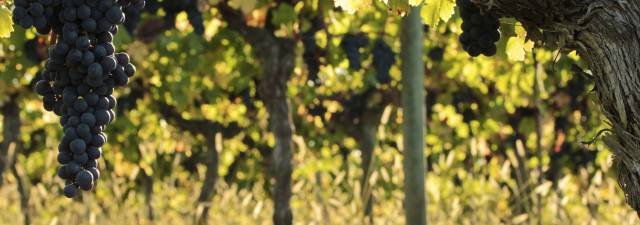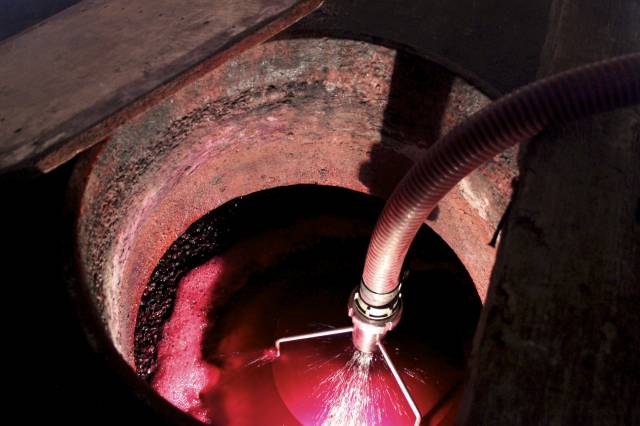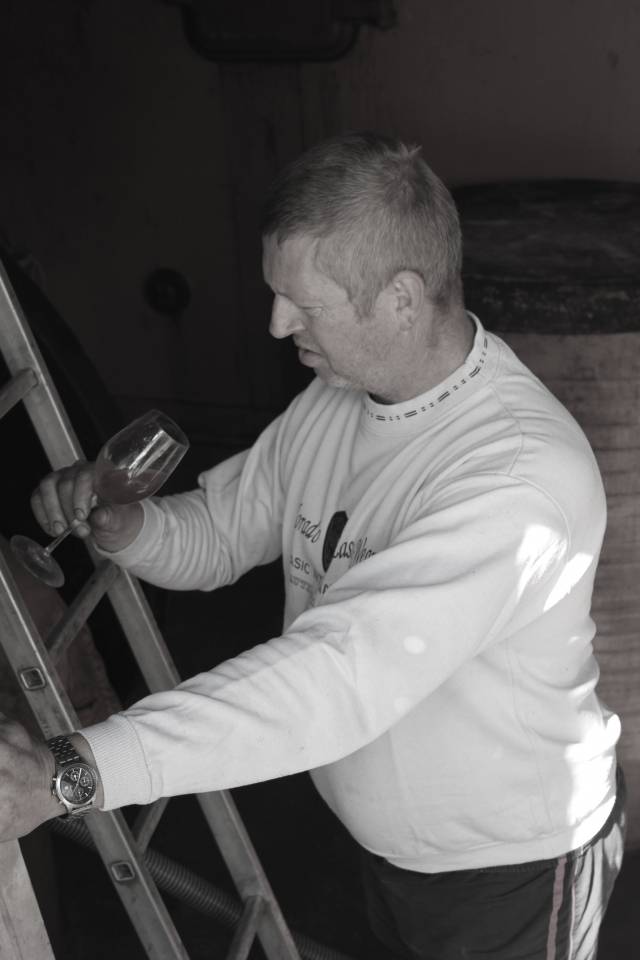
Our know-how
Working on the vineyard while respecting nature
The knowledge of each plot of land, of the strengths and weaknesses of each grape variety, direct any wine grower towards the decisions to be made with the passing seasons.
On our estate, Eric is looking after the vineyard since many years.
The estate is certified HEV (High Environmental Value).

The way we take care of the soil and protect its resources
- Mechanical work (ground decompacting, ploughing), for a better water draining and for burying organic enrichment;
- Use of organic fertilizers to ensure a balanced feeding of the vine;
- Grassing over one out of two rows of vines and regular mowing. By this way, insect life is protected, erosion is slowed down, and biological activity favored.

The main vegetative cycles
The vine nursing starts in winter with a short pruning in double Guyot, keeping the right amount of buds for the next harvest. The two selected canes left on each vine are then folded back to be tied up along the wires to give them the best angle to ripen the grapes.
Vine shoots left on the ground after pruning are then shredded, thus allowing organic matter to return to the plant.
The vine will soon green up. In spring everything goes faster. The vine is a creeper that required constant care and attention in order to obtain good quality grapes.

We have been working for several years with David Perrier from the Gironde Chamber of Agriculture for the follow-up of our vineyard. Every week we check together the various parts of the vineyard, assess the situation –which highly depends on whether conditions- and adjust our strategy within a sustainable protection program. May we take this opportunity to thank David for his professionalism and valuable advice.
The grape harvest is close
One year has elapsed since the last harvest. One year during which we have taken care of the vines. Late September/early October, the grapes are almost ripe.
We taste the berries regularly with Olivier Gigaud, our consultant oenologist from the Soussac based Oenology Center, crunch the grape pips which have turned from green to brown. The analyses do confirm that harvest time has come. We can start picking up the first Merlot or Malbec grapes which are the earliest varieties.
To be patient and wait for the grapes to be fully ripe, or to pick them rapidly and avoid that they go bad, making the right decision is sometimes not easy.


Wine making and maturing
Each vineyard plot is vinified separately in thermo-regulated stainless steel or concrete vats. By this way, we keep the aromatic capital of each grape variety, enhance its specific characteristics and get the best of each vintage.
During maturing, our interventions are limited to regular tasting, analysis and racking. The wine is racked two or three times to aerate it and to get rid of the deposit.
Blending
In spring, blending can start. We taste each wine, carry out various blend trials, and compare them. The objective of this major step is to find out the blend offering the most beautiful harmony.
Olivier Gigaud brings his expertise and experience all year long. He advises us, accompanies our projects and the evolution of our practices with this shared will to always do better.

